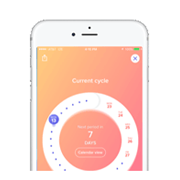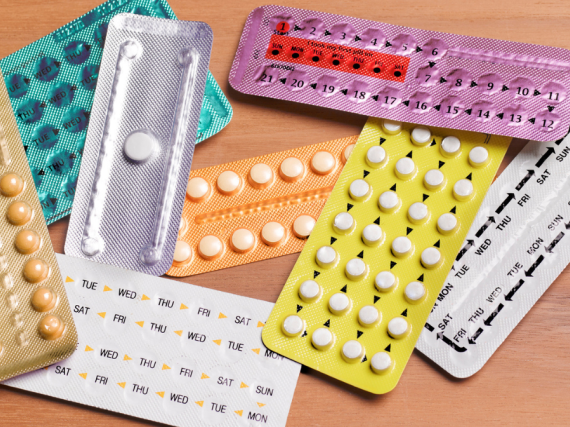Fertility awareness methods

Fertility awareness methods (also sometimes called FAMs, “natural family planning,” or “the rhythm method”) are all about tracking your body’s signs and symptoms to determine which days of the month you can get pregnant, also known as your fertile days.
To find out when your fertile days are, you’ll need to pay very close attention to your body and its patterns, and you’ll also need to keep careful track of what’s happening. There are several different signs and symptoms of fertility that you can track, and there are multiple ways to monitor them.
Details
Fertility awareness methods (also sometimes called FAMs, “natural family planning,” or “the rhythm method”) are all about tracking your body’s signs and symptoms to determine which days of the month you can get pregnant, also known as your fertile days.
To find out when your fertile days are, you’ll need to pay very close attention to your body and its patterns, and you’ll also need to keep careful track of what's happening. There are several different signs and symptoms of fertility that you can track, and there are multiple ways to monitor them.
Costs
Tracking your menstrual cycles and your cervical mucus is totally free. If you are going to track your BBT, you will need a special thermometer, which can cost about $10. Urine test strips and digital hormone tracking kits vary in price, but they can be expensive and insurance usually doesn’t cover them.
How to Use It
To use a fertility awareness method, the first step is to understand the phases of the menstrual cycle. Each phase is triggered by natural changes in your hormones. Every new menstrual cycle starts with your period. Day one of your period is day one of that cycle. An average cycle, from the first day of your period to the day before your next period, is 28 days, but it can be longer or shorter and still be considered normal.
During the first phase of your cycle, your uterus prepares for a potential pregnancy. Then you ovulate, which means that your body releases an egg from one of your ovaries, making it available for fertilization, which happens when the egg meets up with sperm. If fertilization doesn’t happen and a pregnancy doesn’t start, then after 14 days the lining of your uterus sheds---this is your period. If a pregnancy does start, the lining of your uterus doesn’t shed, meaning that you don’t get a period. A missed period is often the first sign of pregnancy people notice.
You can only get pregnant from penis-in-vagina sex on six days during your menstrual cycle---the five days before you ovulate and the 24 hours after ovulation. These are your fertile days. You can prevent pregnancy by not having penis-in-vagina sex without using another birth control method on those days.
###Signs of fertility
All of the fertility awareness methods involve learning and tracking the signs that you are fertile so that you can avoid the kind of sex that can get you pregnant on your fertile days. There are a few different signs of fertility that you can track, and the most effective way to use fertility awareness methods is to track more than one of these signs at the same time.
It’s important to know that no fertility awareness method can tell you for sure exactly when you’re ovulating. But if you track more than one sign of fertility, your chances of predicting when you'll ovulate will be better.
__Menstrual cycle__
If your menstrual cycle is regular, ovulation happens on approximately the same day every cycle. Having a regular menstrual cycle means that your cycle is between 26 and 32 days long and that your cycles are close to the same length every month. If you have a regular, 28-day cycle, ovulation is most likely happening in the middle of your cycle, between days 12 and 16. One way of preventing pregnancy is by tracking your menstrual cycles over a few months, determining when you think ovulation is happening, and then not having penis-in vagina sex without using another method of birth control on the days you’re most likely to be fertile, which are usually days 8 through 19. In order for this method to work for you, your menstrual cycle must be between 26 and 32 days long.
__Cervical mucus__
Cervical mucus (CM) is naturally produced by your body and changes over the course of your menstrual cycle in response to changes in your hormone levels. Cervical mucus comes out of your cervix and then leaves your vagina as discharge.
You can monitor changes in your cervical mucus on a daily basis to check for the type of mucus that happens around the time of ovulation. To monitor your cervical mucus, you will put your finger or fingers inside your vagina, pull them out, and look at and feel the mucus left behind on them. While you have your cervical mucus on your fingers, you can rub the tips of your fingers together and separate your fingers to see and feel the consistency of the mucus.
You can get pregnant from the time when your cervical mucus is clear, stretchy, and slippery (like the consistency of egg whites), until three days after you stop having this kind of mucus. Using cervical mucus to track fertility doesn’t rely on having a regular menstrual cycle, but it is most effective at preventing pregnancy when you are also tracking other signs of fertility.
Keep in mind that infections like bacterial vaginosis, yeast, or STIs like trichomoniasis can change your discharge, making it hard to interpret your cervical mucus. If you know you have an infection or if you think you might, it’s best not to rely on your cervical mucus for predicting your fertile days.
__Basal body temperature (BBT)__
Your basal body temperature (BBT) is your temperature when your body is completely at rest. BBT changes during your menstrual cycle in response to your hormone levels---it’s lower before ovulation and higher from the time you ovulate until you get your period. After you get your period your temperature will drop again. (And if your temperature doesn’t drop, that may be an early sign that you’re pregnant.)
To track your BBT, you’ll take your temperature around the same time every day (after at least six hours of uninterrupted sleep) before you get out of bed with a special, super accurate thermometer. Make sure you get a thermometer that reads to the hundredth decimal place (meaning that it shows two numbers after the decimal point, like 98.62), because the changes in your body temperature that you need to track over your cycle can be that tiny. You’ll write down your daily temperature for a few months, and once you determine what your baseline temperature is, having three continuous BBT measurements more than 0.40 degrees above your baseline indicates you have ovulated and are out of the fertile window after ovulation.
That means that while you may be able to use BBT to confirm that you are in the phase of your cycle between ovulation and your period, it won’t tell you when you are in the five fertile days BEFORE you ovulate. That’s why this method works best when you’re also monitoring your cervical mucus and tracking your menstrual cycle on a calendar. This combination of fertility awareness methods will help you not only predict when you are going to ovulate before it happens but also know when you have ovulated, so you can avoid having sex on all of your fertile days.
__Hormones__
Your hormones naturally rise and fall during your menstrual cycle, and two hormones---luteinizing hormone (LH) and one type of estrogen (EG3)---can be detected in your urine before ovulation. You can use over-the-counter urine test strips and digital kits that check for either LH only or for both LH and EG3 to predict when you are going to ovulate. One important thing to know about tracking your hormones in this way is that LH only rises 24 to 36 hours before ovulation, but you can get pregnant for five days leading up to ovulation. EG3 rises one or two days before LH and usually signals the start of the fertile window. So combining hormone tracking with another fertility sign, like cervical mucus, can make pregnancy prevention with fertility awareness more effective.
__Breastfeeding as birth control__
Breastfeeding is another way to naturally suppress fertility. You can use this method if: 1) you’ve had a baby in the last six months, 2) your baby is fully or almost fully being breastfed with no breaks between breastfeeds that are longer than four to six hours, and 3) you haven’t had a period since before you were pregnant. Once any of those things changes, this method of birth control is no longer effective at preventing pregnancy.
###Ways of tracking fertility
You can increase the effectiveness of fertility awareness in preventing pregnancy by using more than one fertility sign to predict your fertile days. The most common combination of signs people use is basal body temperature and cervical mucus.
To see the trends in your fertility signs needed to predict your fertile window, you’ll need to both pay attention to your body and keep track of your fertility signs. You can keep track of your fertility in a few ways, such as by using a paper calendar, a calendar on your phone or computer, a fertility-tracking app, like Natural Cycles, or by using CycleBeads, a handy string of colored beads that helps you count the days of your menstrual cycle. Depending on the fertility signs you are tracking, your preferences, and whether you need to keep your use of fertility awareness methods private, one of these methods of tracking may work better for you.
Some period and fertility tracking apps keep your private data more secure than others, so be sure to review the privacy policy carefully. You may decide that it’s more secure for you to use a regular calendar than a special fertility-tracking app.
Tracking your cycle for a few months before starting to rely on a FAM for pregnancy prevention can help you understand what’s normal for you and can make fertility awareness methods more effective. If you don’t want to get pregnant while you’re starting to track your cycles, you’ll need to use another method of birth control during that time, like [condoms](/birth-control/condom). During this time, it’s important that you’re not on a method of birth control that contains hormones. Being on a hormonal method will prevent you from learning about and tracking your body’s signs of fertility because you’re not fertile when you’re on hormonal birth control.
Side Effects
There are positives and negatives about each and every method of birth control. And everyone’s different---so what you experience may not be the same as what someone else experiences.
The Positive
There are actually lots of things about FAMs that may be good for you as well as your sex life.* Some fertility awareness methods are free. * There's no prescription necessary---you can start and stop using a FAM without seeing a provider. * FAMs can you learn more about your body and how it works.The Negative
There are no side effects of fertility awareness methods, but there can be disadvantages, including:* Using a FAM requires planning and careful record-keeping. * Using a FAM requires abstaining from penis-in-vagina sex or using an alternate method of birth control when you have penis-in-vagina sex for at least a week per cycle. * FAMs are more effective if both partners participate, and not all partners will. * You can’t switch directly from a hormonal method to a FAM, because the hormones might still be in your system and could affect your cycle. So you’ll need to use a non-hormonal method for a few months until your cycle is regular and you can predict when your fertile days are.Questions
Do you have questions about Fertility awareness methods? Visit Bedsider.org for answers to many of the most popular questions about this method of birth control.

